This article is from: 0xDíaz
Compiled by | Odaily Planet Daily (@OdailyChina)
Translator | Azuma (@azuma_eth)
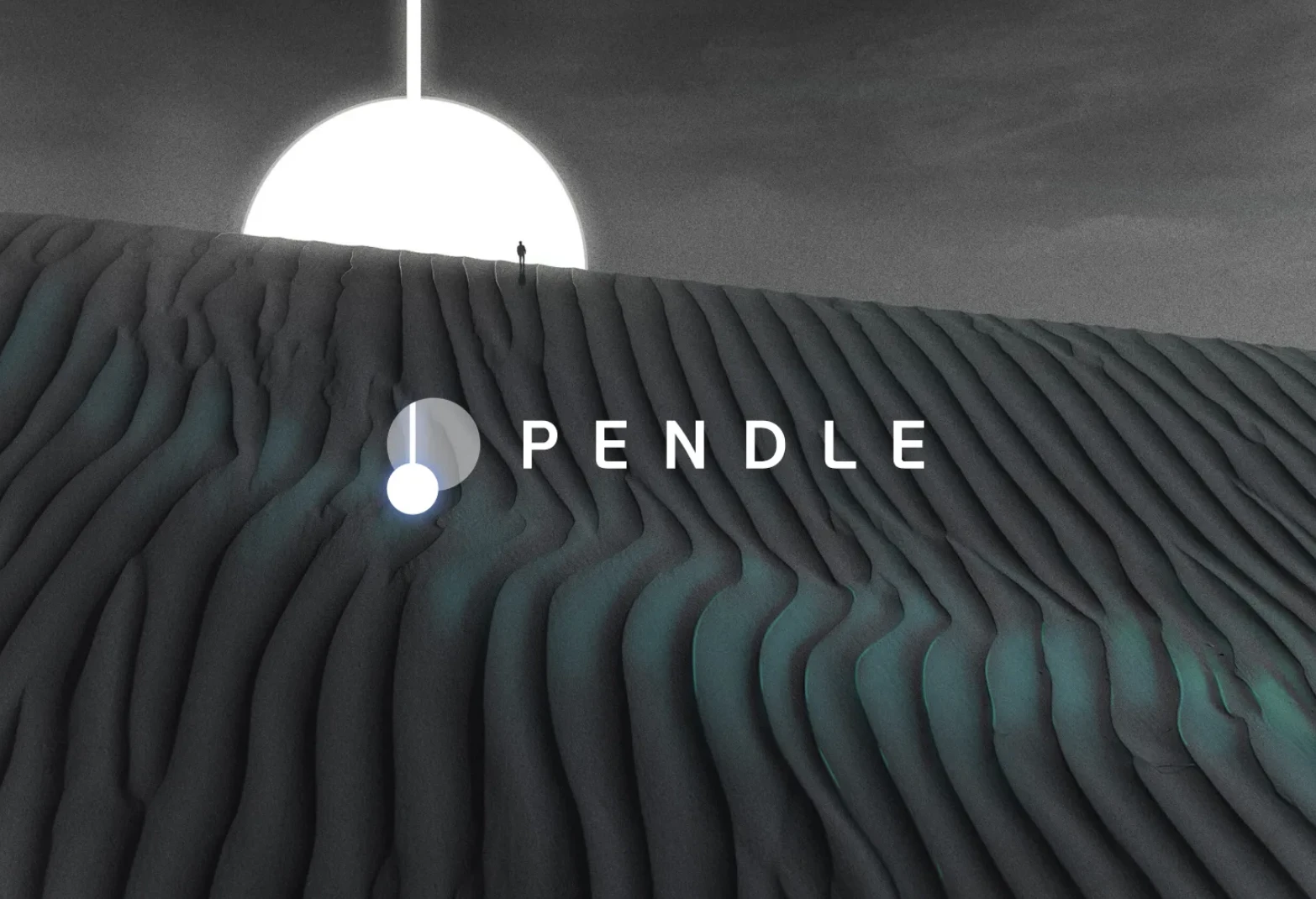
Pendle (PENDLE) has become a dominant fixed income protocol in DeFi, allowing users to trade future yields and lock in predictable on-chain returns.
In 2024, Pendle drove the development of major narratives such as LST (Liquid Staking Tokens), restaking, and yield-bearing stablecoins, and it itself became the preferred launch platform for asset issuers.
In 2025, Pendle will expand beyond the EVM ecosystem, evolving into a comprehensive fixed income layer for DeFi, targeting new markets, products, and user groups, covering both the native cryptocurrency market and institutional capital markets.
The yield derivatives market in the DeFi world can be likened to one of the largest segments in the traditional finance (TradFi) world — interest rate derivatives. This is a market exceeding $500 trillion, and even a tiny share of this market represents billions of dollars in opportunity.
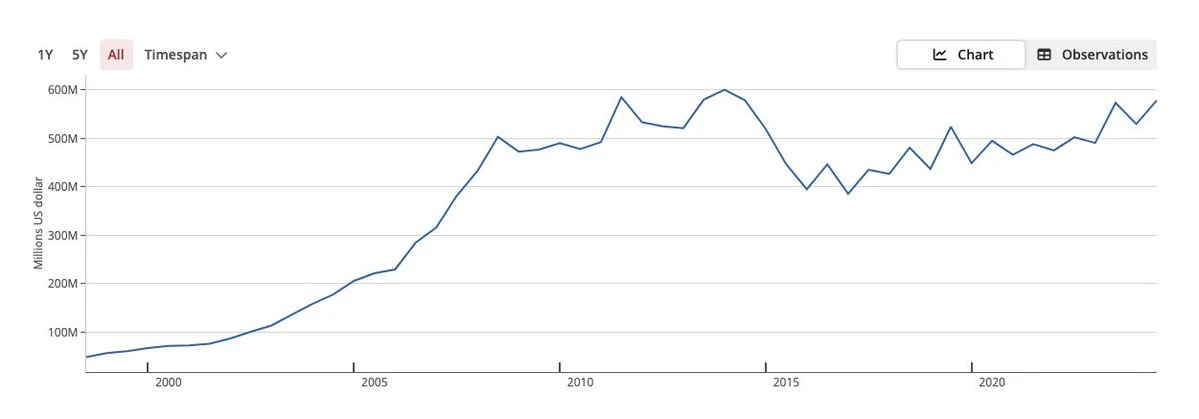
Most DeFi platforms only offer floating yields, which inevitably exposes users to market volatility, but Pendle introduces fixed-rate products through a transparent and composable system.
This innovation reshapes the $120 billion DeFi market landscape, making Pendle a dominant yield protocol. In 2024, Pendle's TVL grew over 20 times, currently accounting for more than half of the yield market, five times that of its second-largest competitor.
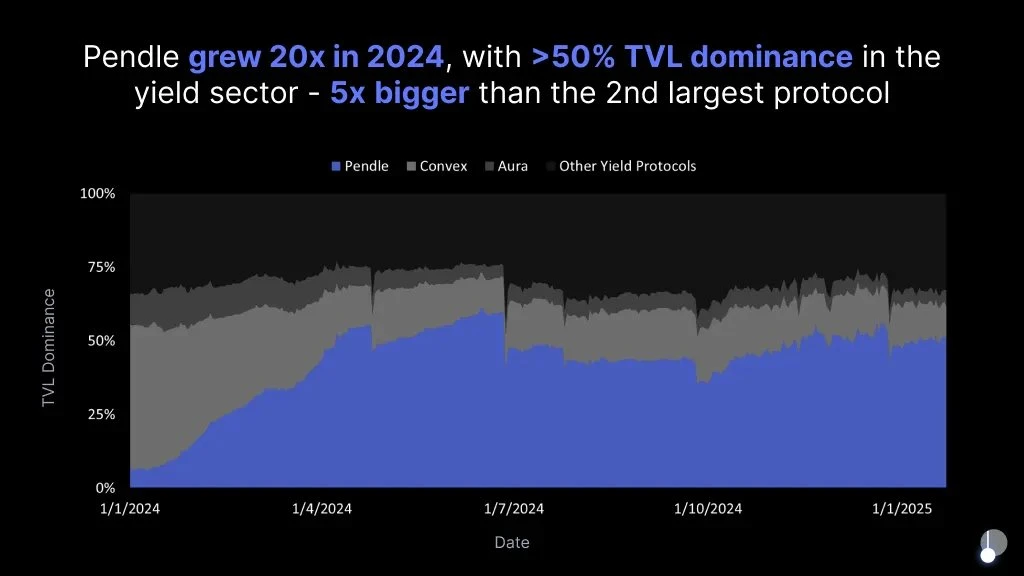
Pendle is not just a yield protocol; it has evolved into a core infrastructure of DeFi, driving liquidity growth for leading protocols.
Finding the Fit: From LST to Restaking
Pendle gained early market attention by addressing a core issue in DeFi — the volatility and unpredictability of yields. Unlike Aave or Compound, Pendle allows users to lock in fixed returns by separating principal from yield.
With the rise of Liquid Staking Tokens (LST), Pendle's adoption surged, helping users unlock liquidity from staked assets. In 2024, Pendle successfully captured the restaking narrative — its eETH pool became the largest on the platform just days after launch.
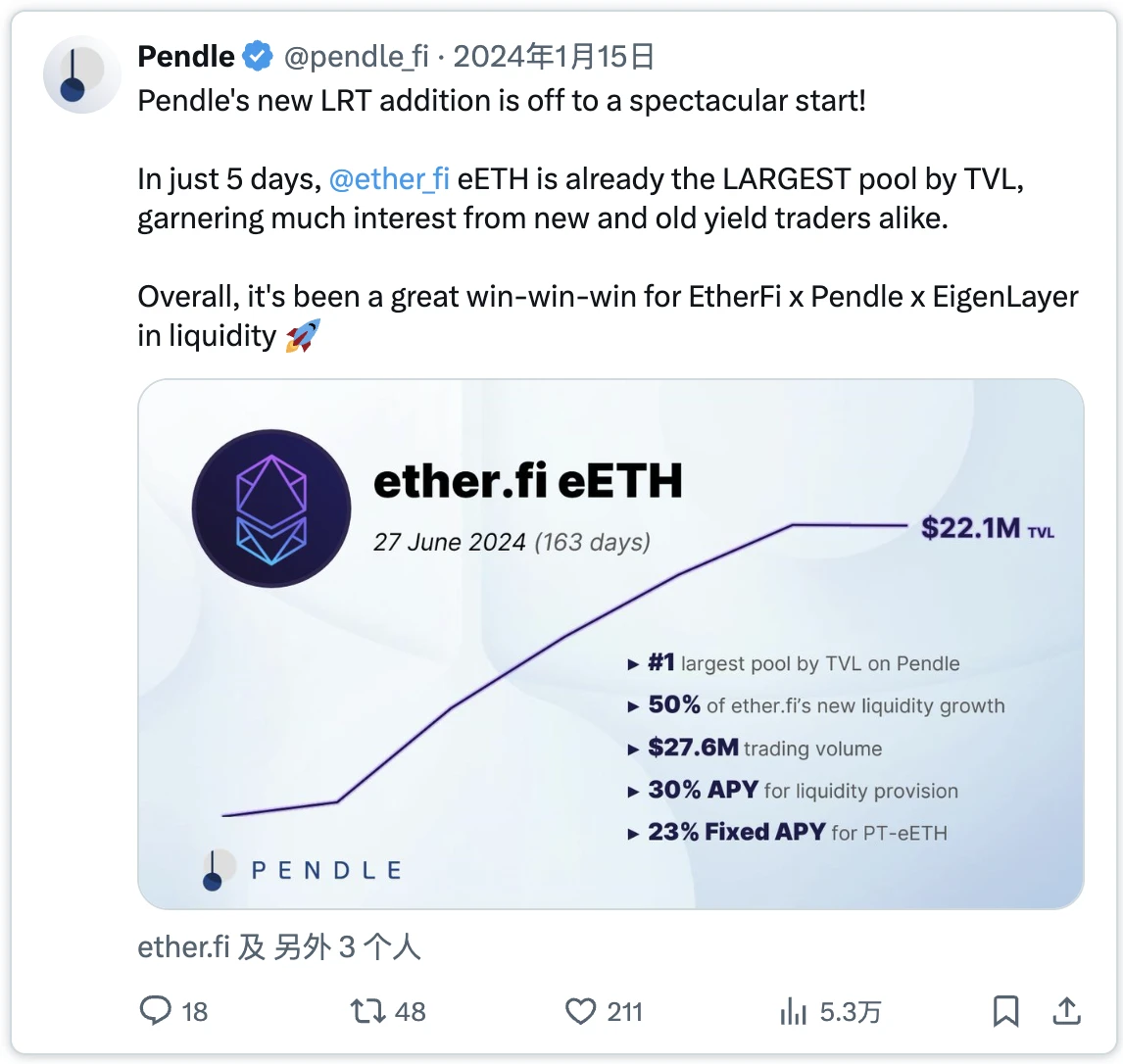
Today, Pendle plays a key role in the entire on-chain yield ecosystem. Whether providing hedging tools for volatile funding rates or serving as a liquidity engine for yield-bearing assets, Pendle has unique advantages in growth areas such as Liquidity Restaking Tokens (LRT), Real World Assets (RWA), and on-chain money markets.
Pendle V2: Infrastructure Upgrade
Pendle V2 introduces Standardized Yield Tokens (SY) to unify the packaging of yield-bearing assets. This replaces the fragmented, customized integration solutions of V1, achieving seamless minting of Principal Tokens (PT) and Yield Tokens (YT).

Pendle V2's AMM is designed specifically for PT-YT trading, providing higher capital efficiency and better pricing mechanisms. V1 used a generic AMM model, while V2 introduces dynamic parameters (such as rateScalar and rateAnchor) that can adjust liquidity over time, narrowing spreads, optimizing yield discovery, and reducing slippage.
Pendle V2 also upgraded its pricing infrastructure by integrating a native TWAP oracle into the AMM, replacing V1's reliance on external oracles. These on-chain data sources reduce manipulation risks and improve accuracy. Additionally, Pendle V2 added an order book feature, providing an alternative price discovery mechanism when AMM prices exceed certain ranges.
For liquidity providers (LPs), Pendle V2 offers stronger protection mechanisms. The liquidity pools now consist of highly correlated assets, and the AMM design minimizes impermanent loss, especially for LPs holding to maturity — in V1, the lack of specialization made LP yield outcomes harder to predict.
Breaking EVM Boundaries: Expanding to Solana, Hyperliquid, and TON
Pendle's plan to expand to Solana, Hyperliquid, and TON marks a key turning point in its 2025 roadmap. Until now, Pendle has been limited to the EVM ecosystem — even so, Pendle has captured over 50% of the fixed income market share.
However, the multichain trend in cryptocurrency is emerging, and through the Citadel strategy, Pendle will reach new pools of capital and user groups.
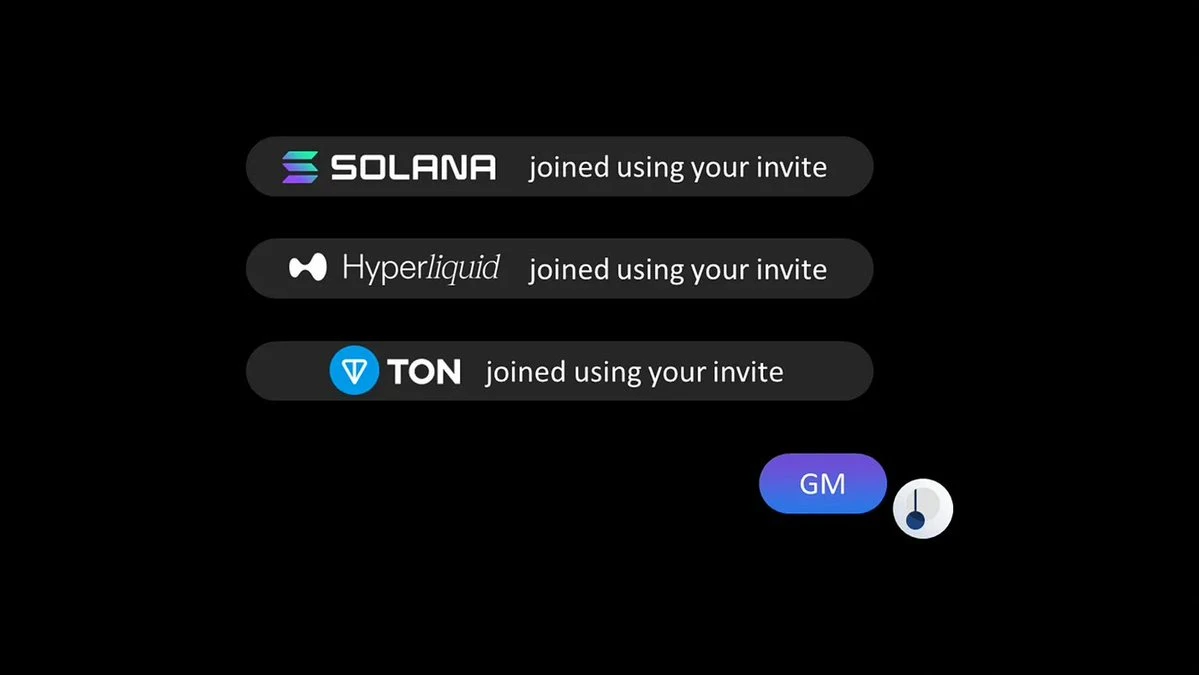
Solana has become a major hub for DeFi and trading activities — January's TVL hit a historical peak of $14 billion, with a strong retail base and a rapidly growing LST market.

Hyperliquid, with its vertically integrated perpetual contract infrastructure, and TON, leveraging the native user funnel of Telegram, are both rapidly growing ecosystems but lack mature yield infrastructure. Pendle is expected to fill this gap.
If successfully deployed, these initiatives will significantly expand Pendle's total addressable market. Capturing fixed income capital flows on non-EVM chains could bring in hundreds of millions in incremental TVL. More importantly, this move will solidify Pendle's position not only as an Ethereum-native protocol but also as a cross-chain DeFi fixed income infrastructure.

Embracing Traditional Finance: Building a Compliant Yield Access System
Another key initiative in Pendle's 2025 roadmap is the launch of a KYC-compliant version of Citadel designed for institutional capital. This plan aims to connect on-chain yield opportunities with traditional regulated capital markets by providing structured, compliant crypto-native fixed income product access channels.
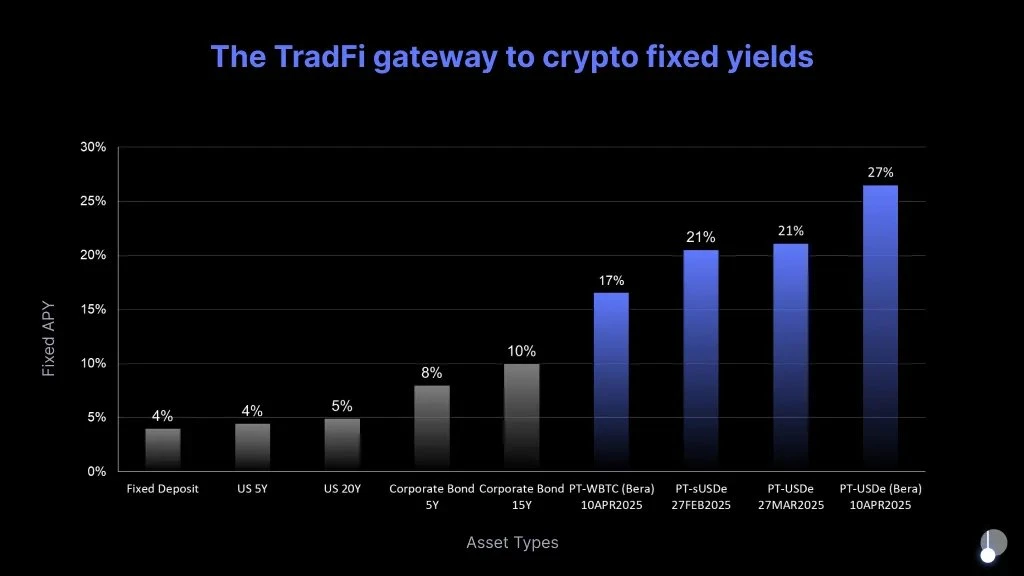
The plan will collaborate with protocols like Ethena, managed by licensed investment managers through an independent SPV structure. This setup eliminates key friction points such as custody, compliance, and on-chain execution, allowing institutional investors to participate in Pendle's yield products through familiar legal frameworks.
The global fixed income market exceeds $100 trillion, and even a tiny allocation of institutional capital to on-chain could bring in billions of dollars in inflows. A 2024 survey by EY-Parthenon shows that 94% of institutional investors recognize the long-term value of digital assets, with over half increasing their allocations.
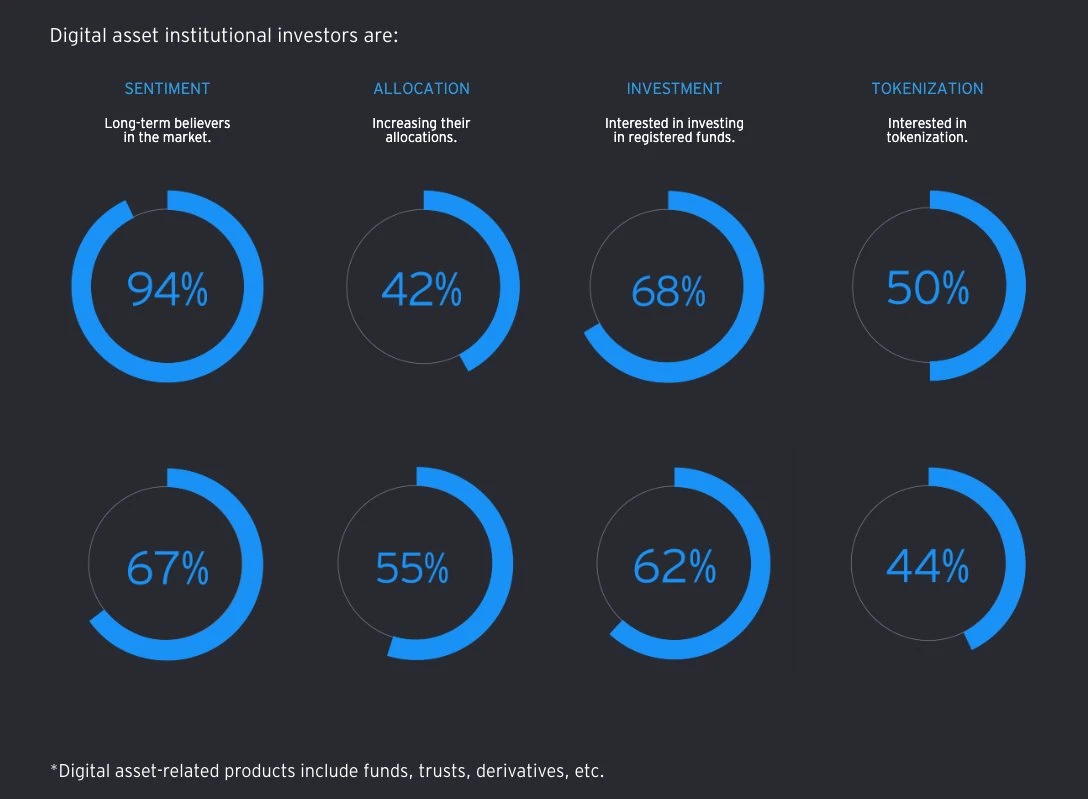
McKinsey predicts that the tokenized market could reach $2-4 trillion by 2030. While Pendle is not a tokenization platform, it plays a key role in this ecosystem by providing pricing discovery, hedging, and secondary trading functions for tokenized yield products — whether tokenized government bonds or yield-bearing stablecoins, Pendle can serve as the fixed income infrastructure layer for institutional-grade strategies.
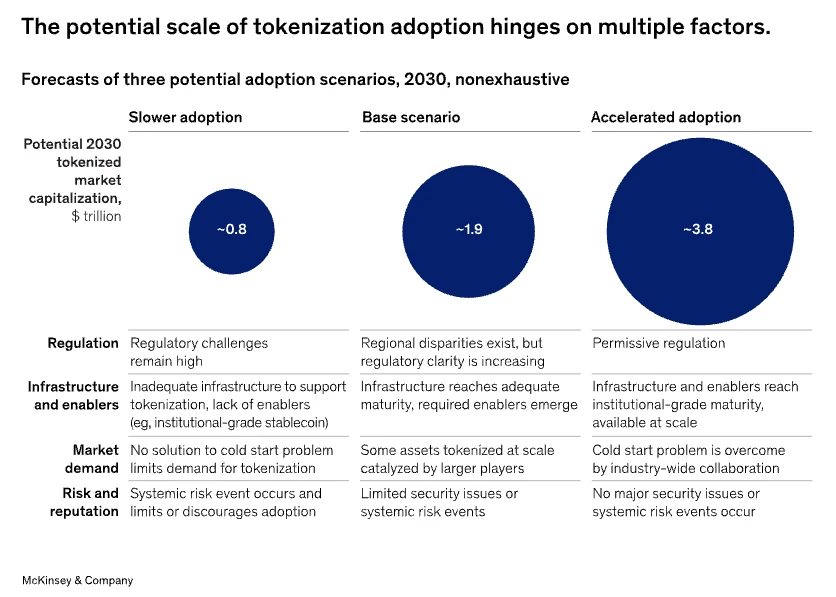
Islamic Finance: A $4.5 Trillion New Opportunity
Pendle also plans to launch a Sharia-compliant Citadel solution, serving the global Islamic finance market, which is valued at $4.5 trillion. This industry spans over 80 countries and has maintained a 10% annual compound growth rate over the past decade, particularly growing rapidly in Southeast Asia, the Middle East, and Africa.
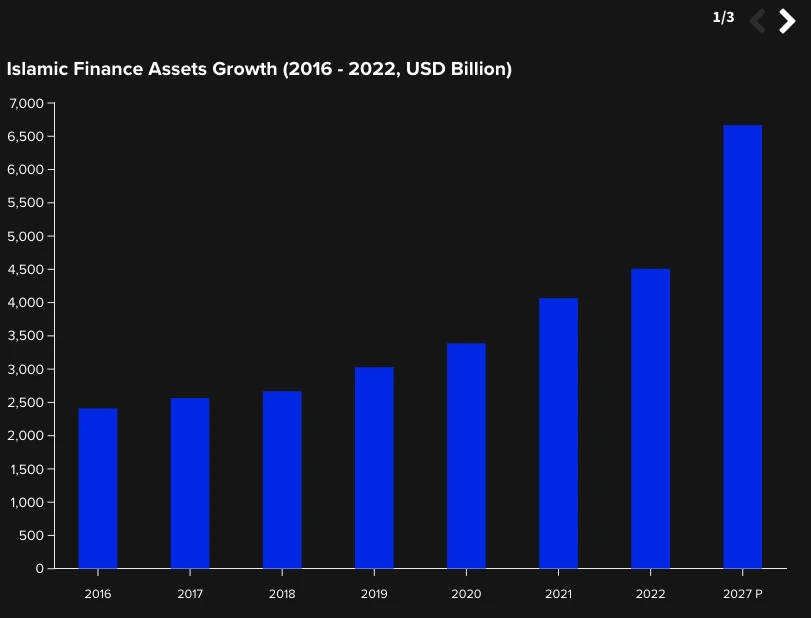
Strict religious restrictions have long hindered Muslim investors from participating in DeFi, but Pendle's PT/YT structure can flexibly design yield products that comply with Islamic law, potentially resembling Islamic bonds (Sukuk).
If successfully implemented, this Citadel will not only expand Pendle's geographical coverage but also validate DeFi's ability to adapt to diverse financial systems — thereby solidifying Pendle's position as a global fixed income infrastructure in the on-chain market.
Entering the Funding Rate Market
Boros, as one of the most important catalysts in Pendle's 2025 roadmap, aims to introduce fixed rate trading into the perpetual contract funding rate market. Although Pendle V2 has established its dominance in the spot yield tokenization market, Boros plans to expand its business landscape to the largest and most volatile source of yield in the crypto space — perpetual contract funding rates.
Currently, the perpetual contract market has over $150 billion in open contracts, with an average daily trading volume of $200 billion, representing a large market that severely lacks hedging tools.
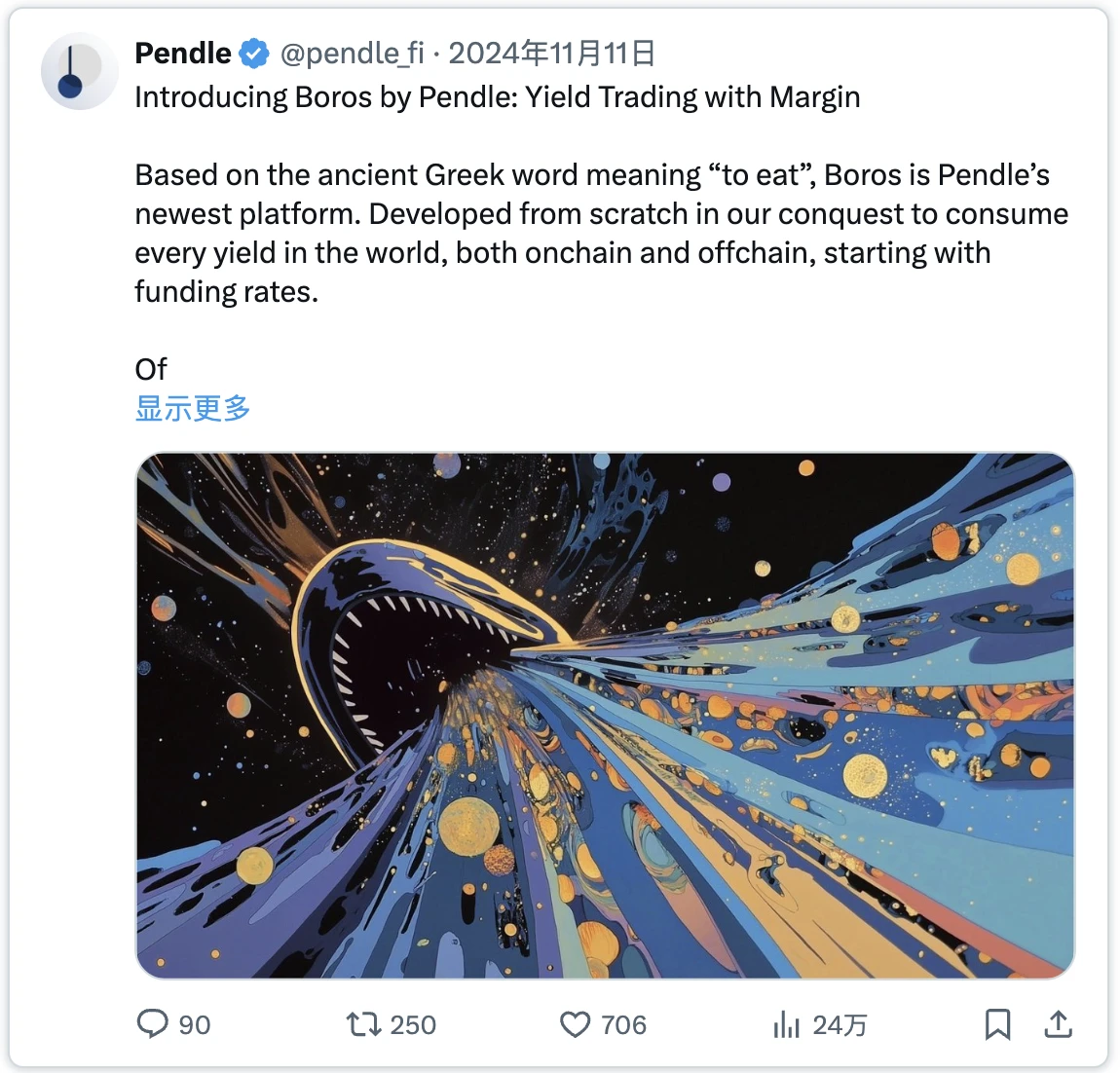
Boros plans to provide more stable yields for protocols like Ethena by achieving fixed funding rates — which is crucial for institutions managing large-scale strategies.
For Pendle, this layout holds immense value. Boros is expected to open up a new market worth billions of dollars and achieve an upgrade in the protocol's positioning — transforming from a DeFi yield application into an on-chain interest rate trading platform, with functionality comparable to traditional financial institutions like CME or JPMorgan's interest rate trading desks.
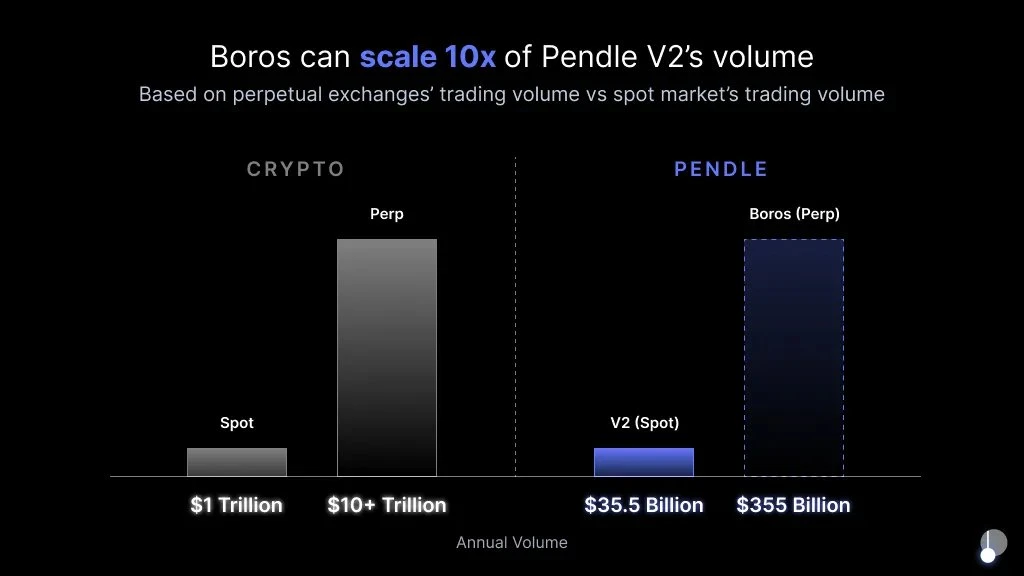
Boros also strengthens Pendle's long-term competitive advantage. Unlike chasing market trends, Pendle is laying the groundwork for future yield infrastructure: whether for funding rate arbitrage or spot holding strategies, it provides practical tools for traders and capital management departments.
Given the current lack of scalable funding rate hedging solutions in both DeFi and CeFi, Pendle is poised to gain significant first-mover advantages. If successfully implemented, Boros will significantly enhance Pendle's market share, attract new user groups, and solidify its core position as a DeFi fixed income infrastructure.
Core Team and Strategic Layout
Pendle Finance was founded in mid-2020 by anonymous developers TN, GT, YK, and Vu, and has received investments from top institutions such as Bitscale Capital, Crypto.com Capital, Binance Labs, and The Spartan Group.
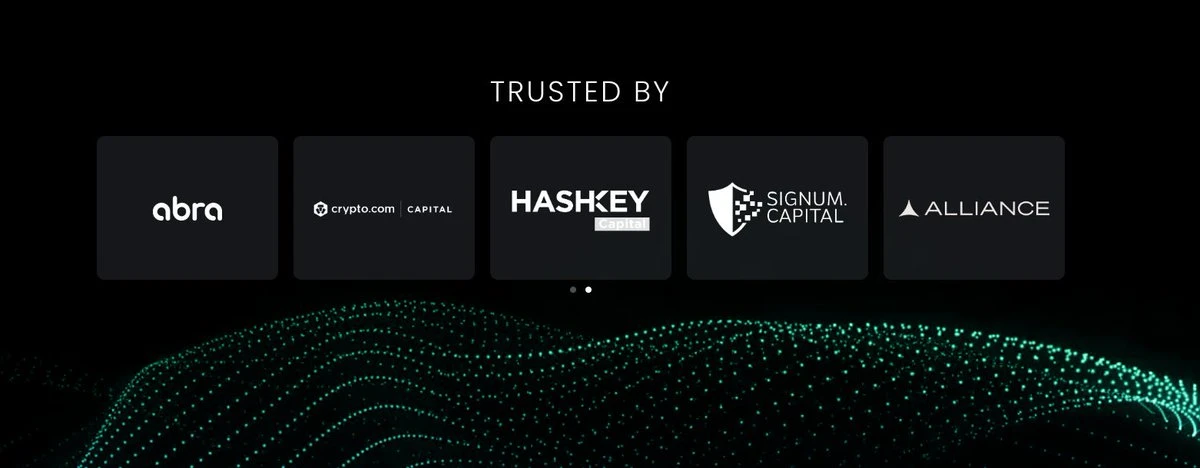
Funding milestones:
Private round (April 2021): Raised $3.7 million, with participants including HashKey Capital and Mechanism Capital;
IDO (April 2021): Raised $11.83 million at a price of $0.797/token;
Binance Launchpool (July 2023): Distributed 5.02 million PENDLE (accounting for 1.94% of total supply) through Binance Launchpool;
Strategic investment from Binance Labs (August 2023): Accelerating ecosystem development and cross-chain expansion (amount undisclosed);
Arbitrum Foundation grant (October 2023): Received $1.61 million for Arbitrum ecosystem development;
Strategic investment from The Spartan Group (November 2023): Promoting long-term growth and institutional adoption (amount undisclosed).
The ecological cooperation matrix is as follows:
Base (Coinbase L2): Deployed to the Base network, integrating native assets and expanding fixed income infrastructure;
Anzen (sUSDz): Launched the RWA stablecoin sUSDz, enabling fixed income trading linked to real-world yields;
Ethena (USDe/sUSDe): Integrated high APY stablecoins, connecting to crypto-native yields and enhancing DeFi synergy;
Ether.fi (eBTC): Launched the first BTC native yield pool, breaking through ETH asset boundaries;
Berachain (iBGT/iBERA): As one of the first infrastructure entrants, building a fixed income framework through native LST.
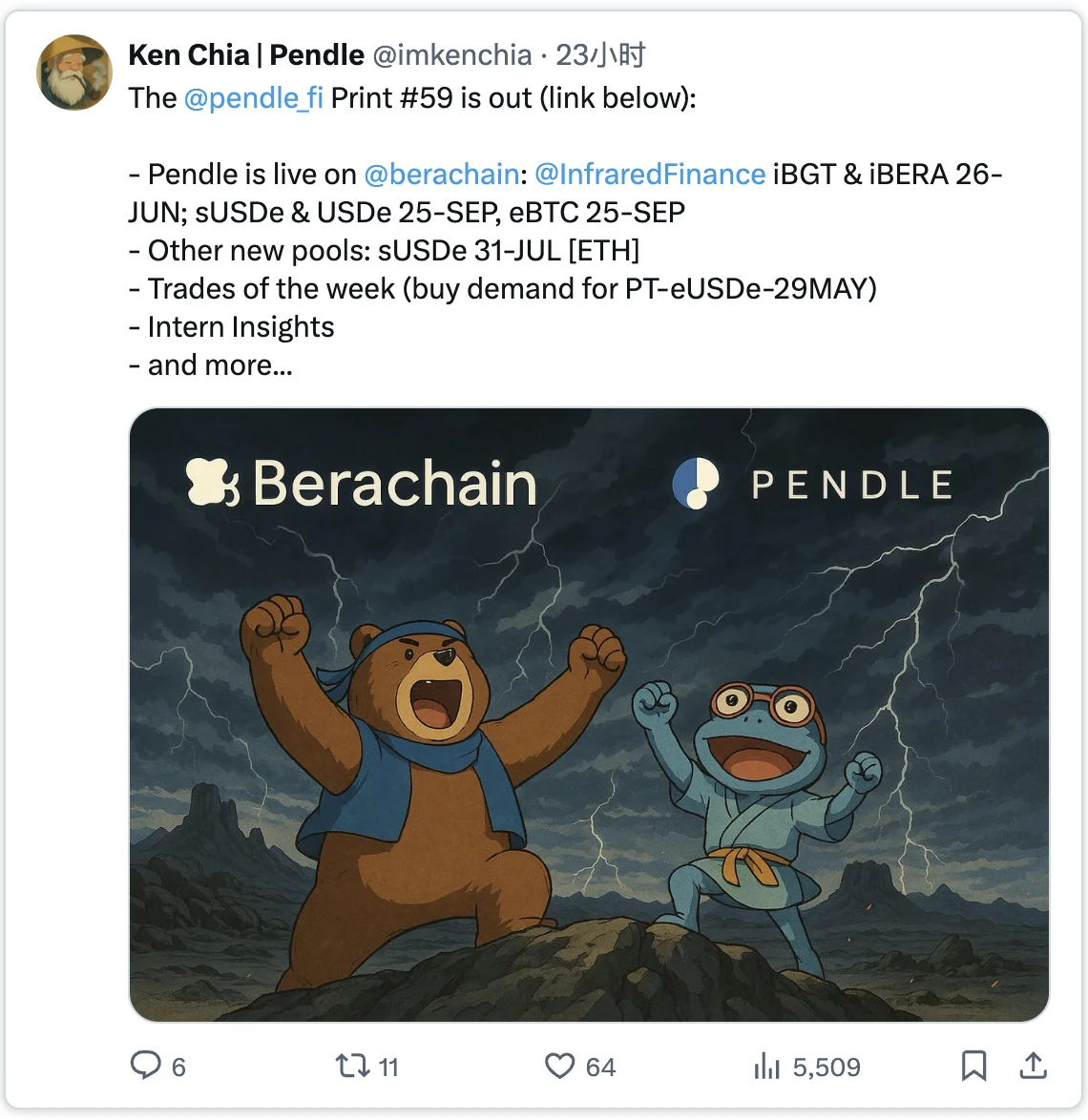
Token Economic Model
The PENDLE token is the core of the Pendle ecosystem, serving both governance functions and protocol interaction permissions. By splitting yield-bearing assets into Principal Tokens and Yield Tokens, Pendle has pioneered a new paradigm for yield management — and PENDLE is the key tool for participating in and shaping this ecosystem.
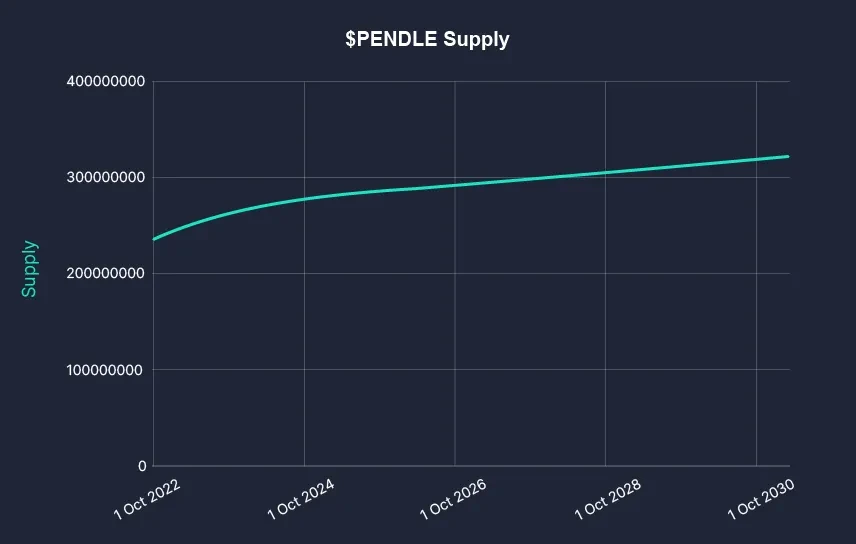
Key data as of March 31, 2025:
Price: $2.57
Market Cap: $410.6 million
Fully Diluted Valuation (FDV): $725.2 million
Circulating Supply: 161.31 million (57.3% of max supply)
Max Supply: 281,527,448
Deflationary Mechanism: Starting from September 2024, the weekly emission of PENDLE decreases at a rate of 1.1% (initial weekly emission of 216,076 tokens). After 29 weeks of adjustment, the current weekly emission has dropped to about 156,783 tokens. This deflationary plan will continue until April 2026, after which the protocol will shift to a 2% annual inflation rate to maintain long-term incentives.
vePENDLE Governance Model
Pendle improves governance and decentralization through vePENDLE. Users can obtain vePENDLE by locking PENDLE; the longer the lock-up period (up to two years) and the more PENDLE locked, the more vePENDLE received. Over time, vePENDLE will linearly decay to zero, at which point the locked PENDLE will be unlocked.
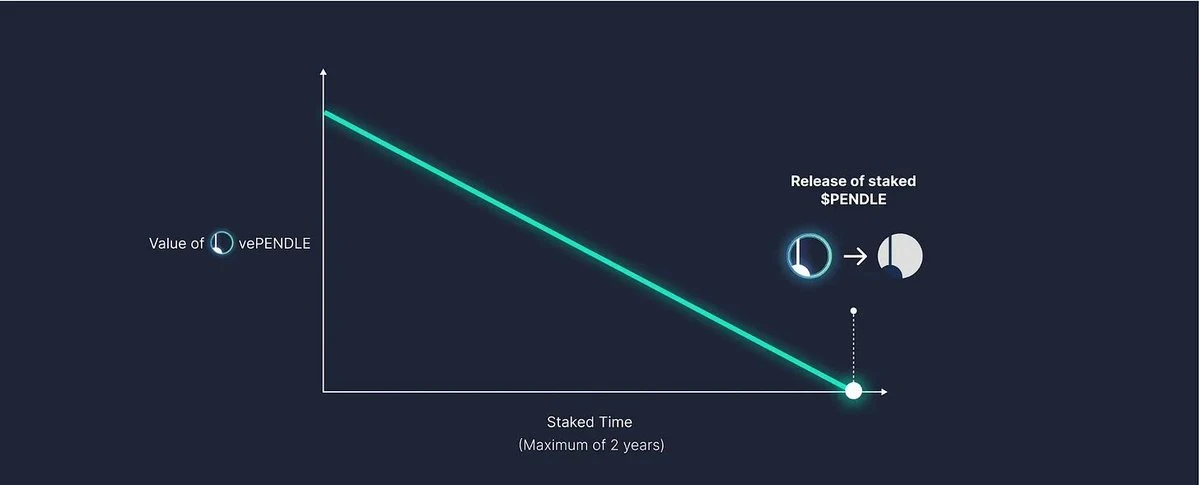
This locking mechanism reduces circulating supply, helping to stabilize prices and align with the long-term incentives of the ecosystem.
Benefits for vePENDLE holders include:
Voting rights in protocol decision-making
Distribution of yield fees
Exclusive incentives and airdrops
In 2024, active vePENDLE holders averaged about 40% annual percentage yield (APY), not including the $6.1 million airdrop distributed separately in December.
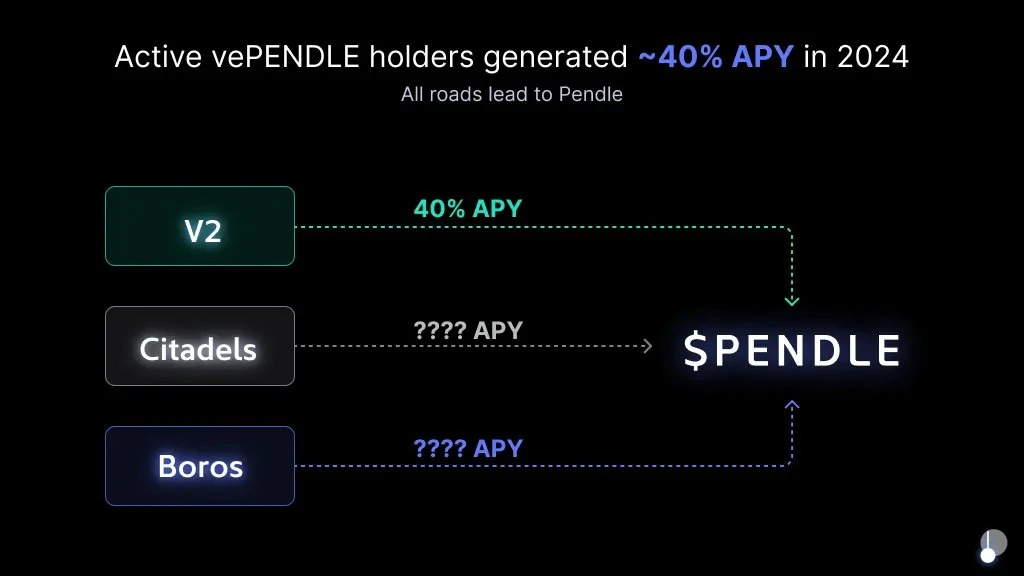
Pendle's Yield Flywheel
Pendle absorbs value through the following three channels:
Protocol fees: 3% of yield from yield tokens is injected into the treasury;
Trading fees: A fee of 0.35% is charged per transaction (0.3% goes to LPs, 0.05% goes to the treasury);
Revenue sharing: A portion of YT revenue is directly distributed to vePENDLE holders;
As V2, Citadel, and Boros progress, more value will flow to vePENDLE holders, further solidifying their core position in the ecosystem.
Main Risks and Challenges
Although Pendle has established a dominant position in the DeFi ecosystem, it still faces several risks. The platform's complexity remains a barrier to widespread adoption, especially for users unfamiliar with yield trading mechanisms. To achieve a new round of growth, Pendle needs to continuously simplify the user experience and lower the learning curve for PT, YT, and fixed income strategies.
Pendle's total value locked (TVL) is highly concentrated in USDe, making the protocol heavily reliant on a single asset and its capital dynamics. Under bullish market conditions, USDe offers attractive yields. However, if funding rates decline or incentives shift to other areas, capital may flow out, impacting Pendle's overall TVL and usage.
Other factors to consider include smart contract risks, oracle reliability, and market volatility of underlying assets. Low liquidity in certain pools may also lead to slippage or reduced capital efficiency when users exit.
Additionally, Pendle's recent growth has partly benefited from airdrops and point incentives. As these programs gradually phase out, sustained momentum will increasingly depend on the protocol's core utility, diversified yield sources, and the continued rollout of products like Boros and multi-chain Citadels.
Conclusion
Despite market cycles often causing fluctuations in investor sentiment and attention, Pendle remains committed to its long-term vision. Pendle's customizable fixed income strategies are at the forefront of DeFi innovation, helping users effectively manage volatility, hedge risks, and achieve stable returns — making Pendle a natural bridge between traditional finance and on-chain market composability.
Looking ahead, Pendle's 2025 roadmap paves a clear path for broader adoption and deeper liquidity. The key to future development lies in simplifying the user experience and the ability to transcend short-term narratives.
With the growth of the stablecoin market and the surge in tokenized assets, Pendle is poised to become the fixed income layer driving the next wave of asset issuance, with its recent strong performance reflecting market demand and confidence. If executed successfully, Pendle could become a core pillar of the future of DeFi fixed income.
免责声明:本文章仅代表作者个人观点,不代表本平台的立场和观点。本文章仅供信息分享,不构成对任何人的任何投资建议。用户与作者之间的任何争议,与本平台无关。如网页中刊载的文章或图片涉及侵权,请提供相关的权利证明和身份证明发送邮件到support@aicoin.com,本平台相关工作人员将会进行核查。




